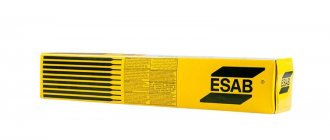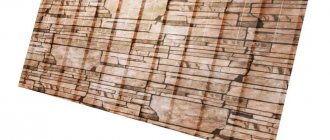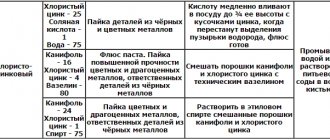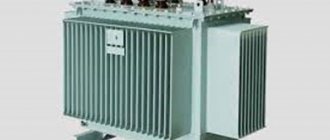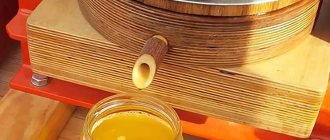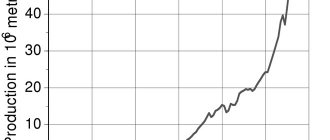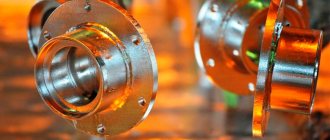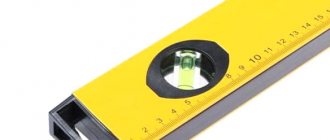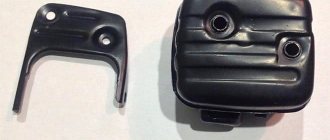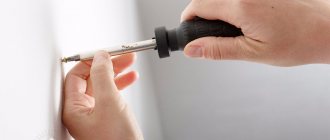Types of building levels
Levels are divided into several types:
- Bubble
- Electronic.
- Pipe.
- Mermen.
- Laser.
Each of them has its pros and cons. Their choice mainly depends on the operating conditions and types of construction work.
Advantages and disadvantages of the bubble level
The most common in construction is the bubble level. It is also used as a ruler. This is a rail where glass test tubes with alcohol liquid are attached. There are air bubbles in them. The central test tube is for testing a horizontal surface, and the two outer ones demonstrate vertical and 45 degrees. The bubble level is the most budget-friendly universal level in construction. It is usually made of aluminum or steel profile. Aluminum is more likely to be deformed upon impact. The instrument error is 1 mm per meter. They are mainly used in wall laying and plastering. The length of the bubble level varies greatly. From 30 centimeters to 4 meters. The most popular levels are up to 1 meter.
What do the divisions on the flasks mean?
Most of the divisions at the construction level are quite understandable to a novice user. On various models there is a familiar ruler for measuring distances or marking segments. Some manufacturers offer offset blocks for marking holes according to a template.
The most questions are raised by divisions at the construction level, seen on cylinders with bubbles inside. Let's look at what these marks are below.
- Marking marks needed to determine the accuracy of the horizon. When the device is placed on a flat surface, the air in the corresponding flask will be placed strictly between the marks, the edges of the bubble will come close to them.
- Error marks. They are located behind the horizon accuracy marks, closer to the edges of the bulb. Present in products of the middle and expensive categories. Each of them comes with instructions that indicate the division price. When the bubble is displaced to such marks, the slope of the surface can be determined in millimeters per linear meter.
Important! In levels with rotary flasks, on which the risks of determining the error are marked, it is proposed to measure angular deviations. All data necessary for calculations is given in the operating instructions for a particular device.
Benefits of the bubble level
- Low price
- Wear resistance
- Universal suitability
- Ease of use
- Calibration capability
Flaws
The disadvantage of the tool is its size. They are inconvenient to use in small spaces. Before purchasing a tool, you need to check it. An indicator is fixed on a horizontal surface, then the level is turned 180 degrees and the resulting indicator is compared with the previous one. If there is no change, then the instrument is calibrated and in good working order.
Device characteristics
The device helps to form straight lines in any plane, control the desired slope or angles. There is a certain principle for selecting a device, its operation and testing.
Description and selection criteria
Building levels are used during home repairs and during major construction of buildings. Therefore they come in different sizes and types . Spirit levels are indispensable when laying pipes and various surfaces that require an angle of inclination. They are used during installation of vibrating and demanding equipment for a flat surface. Reliable slats have a metal casing that protects the device during falls and from other damage on the construction site. Metal slats are made of a special alloy that is resistant to corrosion. Plastic devices are less durable, but cheaper.
The device is selected with the ability to adjust the capsule. Determine the correctness and accuracy of the indicators. To do this, place a level in the store on a horizontal surface, marking the edge of the end of the bar with a marker.
The bubble is not always in the center of the ampoule, but extends 1-2 mm, for example, beyond the left ruler. The readings are remembered and the bar is turned 180 degrees.
If the capsule expresses a similar indicator, the level is correct. The second capsule, responsible for the vertical plane, undergoes the same test. In this case, the device is leaned against a vertical stand. The readings are checked on one side and then on the opposite side.
Construction levels come in different lengths : from 20 cm to 4 m, each of them is designed for specific types of work. The optimal option for using the device in a domestic environment is a length of 50-60 cm. Short devices are suitable for installing sockets and switches. Others - 40 cm and 1 m - are convenient for laying tiles. Large sizes are used for large-scale construction and repair work. The longer the level, the more correct its readings.
The technology for manufacturing a building level is simple, but it requires precision and the use of high-quality materials for the device to work properly. Trademarks that characterize themselves as responsible manufacturers of levels: Kapro, Shtabilo, Ermak, Bosch, Gross Laser, Shark and Leader.
Types of construction tools
Today there is a large selection of levels depending on modification, shape, size and cost. The device must be purchased from a specialized hardware store and comply with quality certificates. This will ensure that the planned work is completed correctly.
Level types:
- Bubble.
- Water.
- Laser.
Each type of device is used to align vertical and horizontal lines. Before using a bubble level, carefully study its structure. The device looks like long marked strips, each containing 1-3 level indicators (“eyes”). Each indicator is like a capsule, inside of which there is technical alcohol and an air bubble. If the integrity of this part is damaged, the entire device is considered unsuitable for further use. The ball moves in the capsule due to gravity. Its correct location is in the center.
The base of the plank is made of wood, plastic or aluminum. The heavier the device, the more accurate and functional it is. The first “eye” is called the sight and is located in the center of the level body. It is responsible for the exact and correct location in relation to the horizontal plane. The second landmark is rotated 90 degrees and, unlike the vizier, adjusts the vertical values. The next capsule is placed at a 45 degree angle to the first “eye” and is used to align the corners.
A water level (spirit level) is used to horizontally level the surface. It is convenient for them to measure distant points on the surface, for example, in distant rooms. A simple design consists of two tubes with divisions and a hose connecting them, ranging in size from 3 to 25 m.
In this case, Pascal's law of communicating vessels works. The principle of operation is that water is drawn into a colorless hose with flasks at the ends, and according to the law of communicating vessels, it will be the same in two containers. Gradually move the tool onto walls and other surfaces. By connecting the marks, you get an even horizontal line.
An expensive and technologically advanced laser level is used in profile construction and planning. The laser beam that the device emits passes in three planes, allowing you to adjust the placement of materials. Narrow specialists still highlight the digital level, but it does not inspire confidence due to the special device built into the smartphone.
Some models are equipped with a magnifying glass or fluorescent liquid for ease of use. Thanks to the lens, the size of the bubble increases, and the latter factor provides illumination in the evening. Some manufacturers combine several tools in one, for example, marking divisions for measuring parameters on the narrow part of the bar. This device is used as a construction ruler.
A round bubble level with a similar principle of operation is sold. A sealed capsule with an air bubble indicating deflection is located in a small round housing equipped with an adhesive base on the underside. This device is used in industrial enterprises where the strict horizontal plane of machines or other equipment is important. Over time, any building shrinks. The level notices the changes taking place and does not allow violations of production technology.
Shockproof models have become popular. During the work, falls, shocks, and mechanical damage often occur that disable the device. Long devices break more often, since their parameters increase the likelihood of a fall and increase the impact.
Device made from scrap materials
A simple bubble tool is made using a plastic bottle with convex walls. Multi-colored water is filled into it so that the air ball has a diameter of 0.5-1 cm. Place a bottle on a horizontal plane and mark the location of the bubble with a marker. This results in a horizontal surface mark.
Another way is to use a small ball. On a smooth surface it will easily move towards the maximum inclination. The vertical plane is checked using a plumb line. This is a copper weight suspended on a long rope. The device is fixed along the wall, obtaining a clear vertical. To maintain the even position of the thread during the repair process, screws are attached along it.
Electronic level
Unlike the bubble level, the device is equipped with an electronic display where you can see indicators and deviations from the norm. It also has an audible notification when the perfect vertical or horizontal position is reached. The electric level is more expensive, more accurate and has an error of only 0.1 degrees. Before purchasing, you also need to check the serviceability of the sensors. They will be checked in the same way as the bubble one.
Pipe level differences
The pipe level is also a bubble level. It is fixed in a corner and is designed to check the inclination of pipes and beams. When measuring, it simultaneously controls the horizontal and vertical. The pipe level is distinguished by its accuracy and the advantage of its compact size. Its disadvantage is that it is not suitable for other work.
How to calibrate the device and why it is needed
Few people know that even at the stage of purchasing bubble levels, it is necessary to check the accuracy of their functioning. Perhaps you have been using the level for a long time, and at the same time you did not even realize that the measurements it performs are carried out with errors. If this is the case, then it's time to not only check your tool, but also fix it. To begin with, it is worth noting that bubble level calibration is a procedure by which the measuring part of the instrument is brought to an ideal state.
Not only levels that have a special adjustment system in the form of screws can be calibrated, but also devices that do not have such a mechanism. First, let's look at the procedure for calibrating a level that has a setting system. The calibration instructions are as follows:
Hydraulic levels and their characteristics
To check the slope of long surfaces, use a water level. The two test tubes are connected by a long flexible hose. The hose length can be from 5 to 25 meters. They fill with water. The device works on a physical principle where atmospheric pressure equalizes the column of liquid in vessels. If the water column in the vessels is at the same height, then the goal has been achieved. Compared to other levels, it is the cheapest. Also, when purchasing, you should pay attention to the quality of the materials from which it is made. The capabilities of this tool are limited, which is its disadvantage.
What not to do
When using a bubble building level, you should adhere to some rules for working with it. Among them are the following:
- Do not apply the level to the working surface with its side or top.
- Do not use the tool without first adjusting it. To do this, you need to prepare a level, pencil, ruler and nail:
- Perform adjustments on as level a surface as possible. This can be the left corner of the wall with convenient access to it;
- retreat from the corner 3-5 cm;
- drive a nail into the wall;
- bring one side of the level to the nail, resting it against the surface of the wall;
- draw a line on the wall;
- lean the other side of the level against the nail;
- draw another line.
If the lines completely match, this indicates that the level is set correctly. If the lines diverge, a mark must be placed at the place where they intersect. After this, repeat the application procedure again. In this case, it is necessary to tighten the flask little by little. The adjustment should be repeated until the lines match completely.
- You should not buy levels that cannot be adjusted. There is a misconception that manufacturers produce tools to certain standards, which eliminates the need for customization. Each purchased building level requires preliminary configuration.
- Do not use the tool without checking that it works correctly.
- It is better not to buy levels whose design does not have adjusting screws located near each flask, 2 on each side. The screws should have wide heads: this makes adjustments easier and faster.
- It is not recommended to store the level without a cover. Foamed polystyrene foam is suitable for its production. In this case, you can be sure that the level flasks will not be damaged.
- The level should not be allowed to fall from a height. This may cause the bulb to crack or the instrument to become out of tune.
- It is better not to buy a level whose body is made of fragile material. Experts advise giving preference to levels whose body is made of wood, aluminum or durable plastic. The duration of use of such levels is several orders of magnitude longer.
- It is not recommended to buy inexpensive models of instruments. The period of their use will be short, and their data will not be accurate.
A construction bubble level is a tool without which it is impossible to carry out construction and installation work.
Pros and cons of a laser level
A level is a professional equipment that determines the vertical and horizontal and illuminates it with a laser beam. The range of the luminous line, which can be tens of meters, depends on the power of the equipment. The laser level is the most advanced and provides maximum accuracy. Its small size allows it to work in any room. This type of level is used by professional builders and can greatly speed up the work process. With its help it is easy to lay tiles, stretch the ceiling and even glue wallpaper. The disadvantages include its high cost, but it is effective and extremely accurate in measurements.
